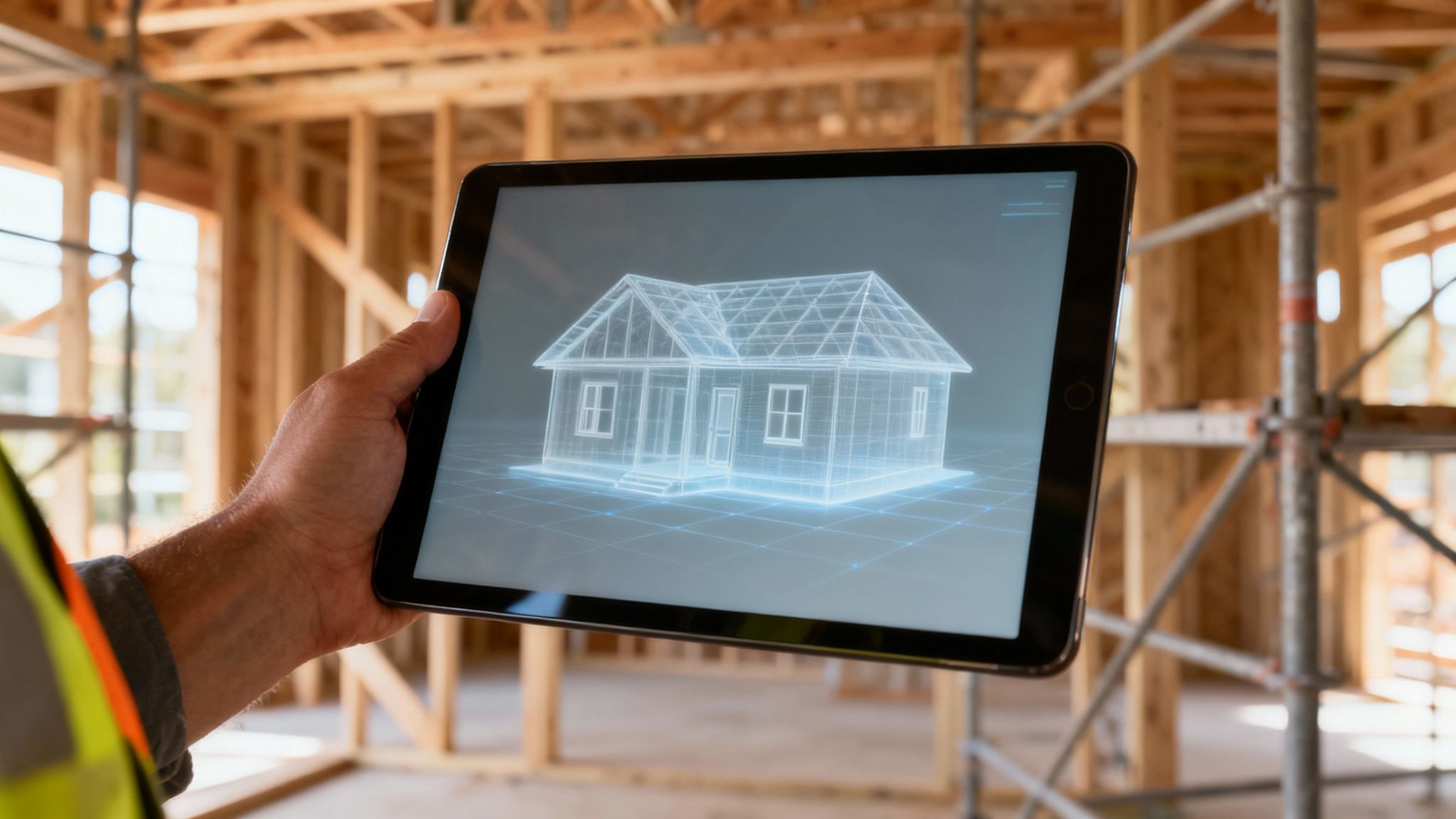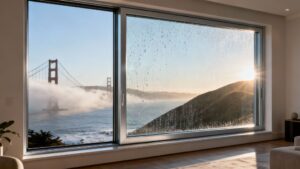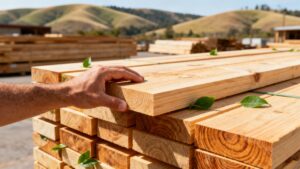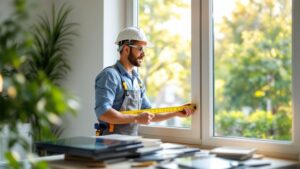In the construction world, trust used to be built on paper specs and promises. Today, it’s built on something you can see: visual proof.
Seeing isn't just believing; for modern customers, seeing is building. This shift explains how everyone from Bay Area homeowners to seasoned contractors uses visual content to verify quality, understand complex products, and gain confidence before making a purchase.
The Power of Seeing Before Building
Not long ago, a handshake and a blueprint were all you needed to kick off a project. Now, clients want to see your work before they will even consider committing.
This change is rooted in a simple truth: seeing inspires more confidence than reading. Would you rather follow a text-only recipe or watch a detailed cooking video? The video removes guesswork and makes you feel like you can succeed.
This is exactly what's happening in the building industry. Builders, architects, and homeowners in Berkeley and Oakland now rely on platforms like YouTube and Instagram for product demos and installation guides. A video showing how to install energy-efficient windows builds more trust than a dense data sheet ever could.
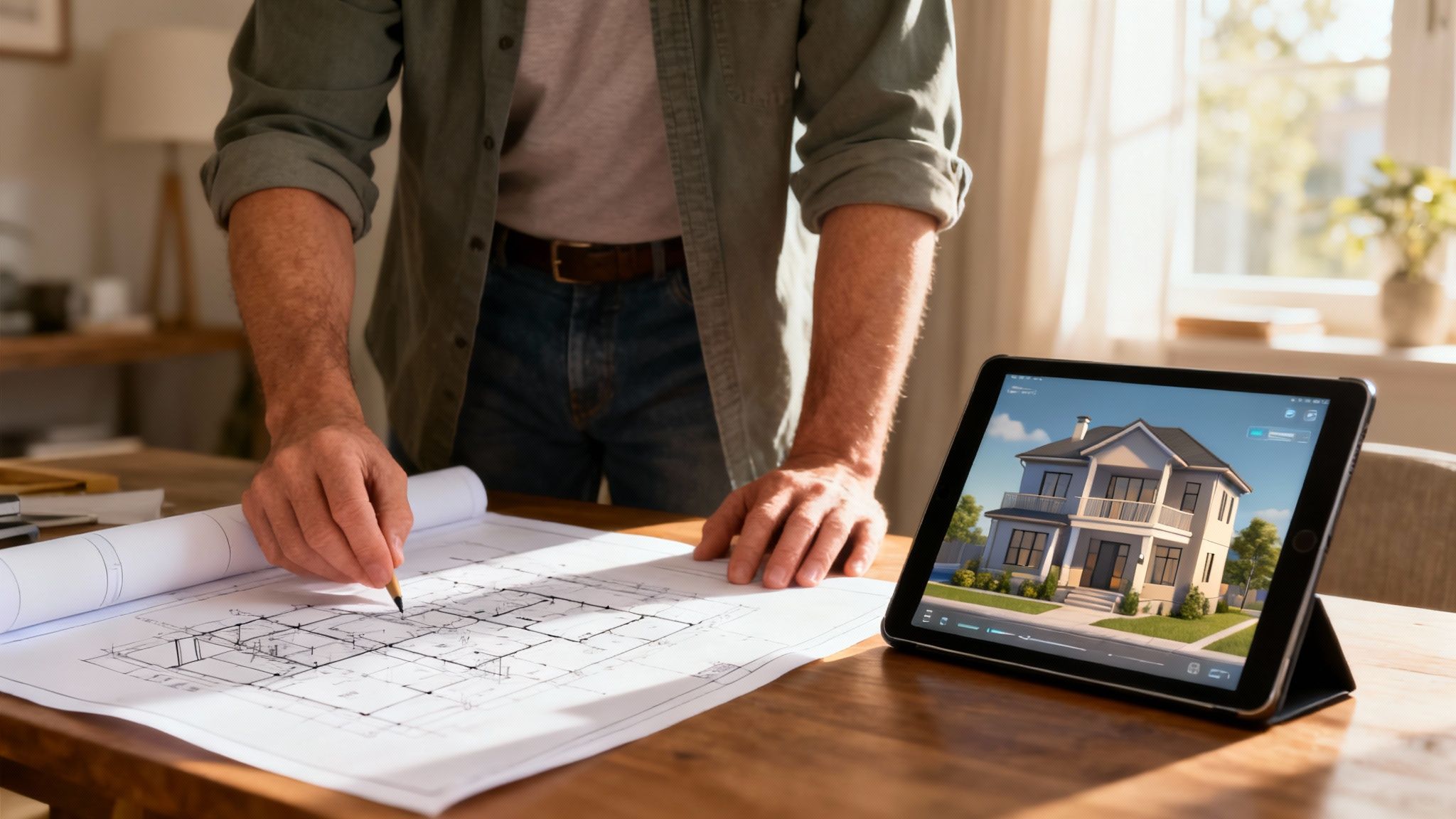
Caption: Visual content like photos and videos helps builders, architects, and homeowners in the Bay Area understand product quality and installation before work begins.
Why Visual Proof Is Essential Today
For building professionals and suppliers, authentic and educational visual content is no longer a marketing extra. It’s a core part of the customer's journey. Highlighting this, many find that winning construction projects with professional video production is now the standard for proving your capability.
Great visual content does a few key things really well:
- It Makes Complex Ideas Simple. A short clip can explain how a complex door mechanism works better than a paragraph of technical text.
- It Shows Real Quality. Words can't capture true craftsmanship, but high-resolution photos of premium lumber or a flawlessly completed project can.
- It Creates an Emotional Connection. Seeing a beautiful, finished space helps potential clients in San Francisco visualize the possibilities for their own homes.
From Blueprint to Reality at Truitt & White
At Truitt & White, our deep product knowledge makes us uniquely positioned to create this kind of valuable content. We help professionals and homeowners make confident decisions by visually demonstrating how our materials perform in the real world. This approach bridges the gap between a technical spec sheet and its actual application.
Visual consistency is a signal to customers: “Yes, you’re in the right place. We’ve got what you need.” This familiarity builds trust and shows reliability and attention to detail.
There’s no better way to see quality than by exploring real-world projects. Our project portfolio is filled with examples of how premium materials come to life in Bay Area homes and buildings. This kind of visual evidence is the new currency of trust.
How Visuals Bridge the Knowledge Gap in Construction
Construction projects are full of technical details and industry jargon. This can sound like a different language to a homeowner, leading to uncertainty—the biggest enemy of trust. Visual content is the best tool for closing that gap and turning complicated specs into simple, understandable proof.
For a homeowner in Berkeley, reading about a window’s U-factor and SHGC is confusing. But a two-minute video showing how that window stops heat transfer and lowers energy bills makes perfect sense.
The same goes for a contractor in Oakland. Seeing a video of a product surviving a stress test is more convincing than a manufacturer's written claim. Visuals simply show the value, making information accessible to everyone.
Turning Abstract Data into Concrete Understanding
One of the toughest parts of any building project is helping clients see the final vision. Blueprints and spec sheets are abstract. A high-quality photo or a video walkthrough makes the project feel real.
Visuals answer questions clients don't even know to ask. A homeowner might not think to ask about the grain consistency of lumber, but showing it up close in a video immediately proves its superior quality. This transparency lowers the perceived risk of a big investment.
When you create a shared visual understanding, everyone gets on the same page. It reduces misunderstandings and builds the trust needed for success. Of course, knowing how to read the initial plans is also a great first step; you can learn more about how to read construction blueprints in our guide.
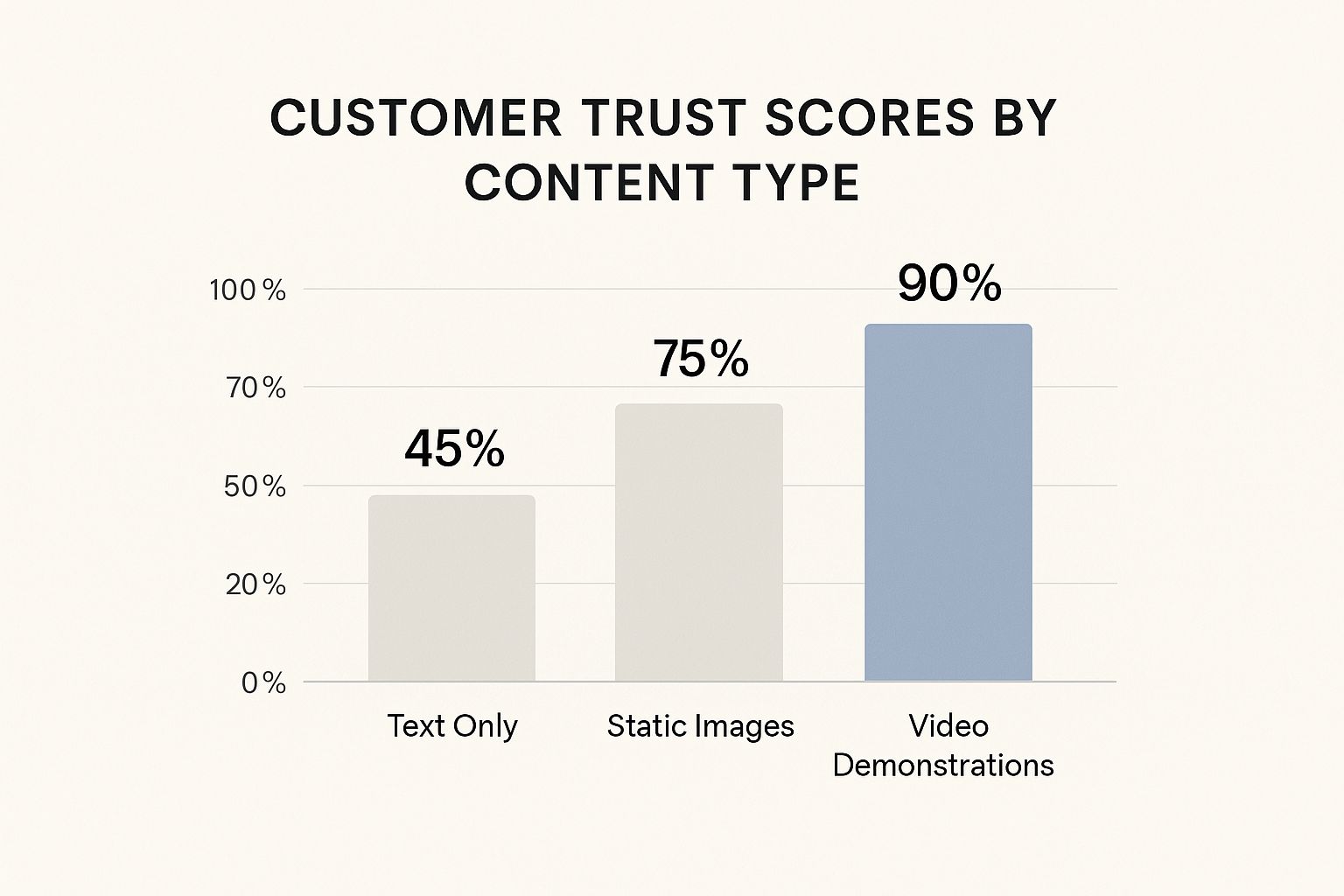
Caption: This chart shows that video demonstrations are the most effective way to build customer trust, outperforming both static images and text-only descriptions.
This chart makes one thing clear: while static images are a big improvement, video content is the new gold standard for earning trust.
How Visual Content Builds Trust with Different Audiences
Different audiences in the Bay Area building community—from architects to DIY homeowners—respond to different types of visual proof. Matching the content to what each group values is key.
| Audience | Preferred Visual Content | Primary Trust Factor |
|---|---|---|
| Architects & Designers | High-resolution project galleries, 3D renderings | Aesthetic potential and material quality |
| General Contractors | Installation videos, stress test demonstrations | Durability and ease of installation |
| DIY Homeowners | Step-by-step video tutorials, before-and-after photos | Achievable results and clarity of process |
| Real Estate Developers | Drone footage of completed projects, virtual tours | Market value and finished project appeal |
Providing the right visual evidence for the right audience helps you become an indispensable project partner.
Educating Across Generations and Expertise Levels
This shift toward visual learning is a universal change in how people research and make decisions. This is especially true for home improvement projects, where seeing how a task is done correctly is everything.
The numbers back this up. Over 50% of Millennial and Gen X DIYers use YouTube for product research. Even 38% of Baby Boomers rely on video tutorials when planning home improvements. This pattern shows that video educates and builds confidence across all generations.
By demonstrating product performance and installation techniques visually, you empower your audience. You’re not just selling a product; you're providing the knowledge and confidence they need to use it successfully.
This educational approach does more than just sell. It positions you as a trusted resource. When a builder, homeowner, or architect in the Bay Area has a question, they’ll remember who gave them clear, visual answers.
Building Trust with Authentic Project Showcases
Polished stock photos have their limits. They don't build real trust because they lack authenticity. Trust is earned by showing real projects in familiar Bay Area settings, proving that your work and materials hold up in the real world.
Genuine content—like behind-the-scenes videos, project spotlights, and customer testimonials with real photos—connects with your audience on a deeper level. It shows your commitment to craftsmanship and transparency. It is the difference between showing a generic photo of lumber and a short video where an expert points out the unique grain of a specific piece of redwood.
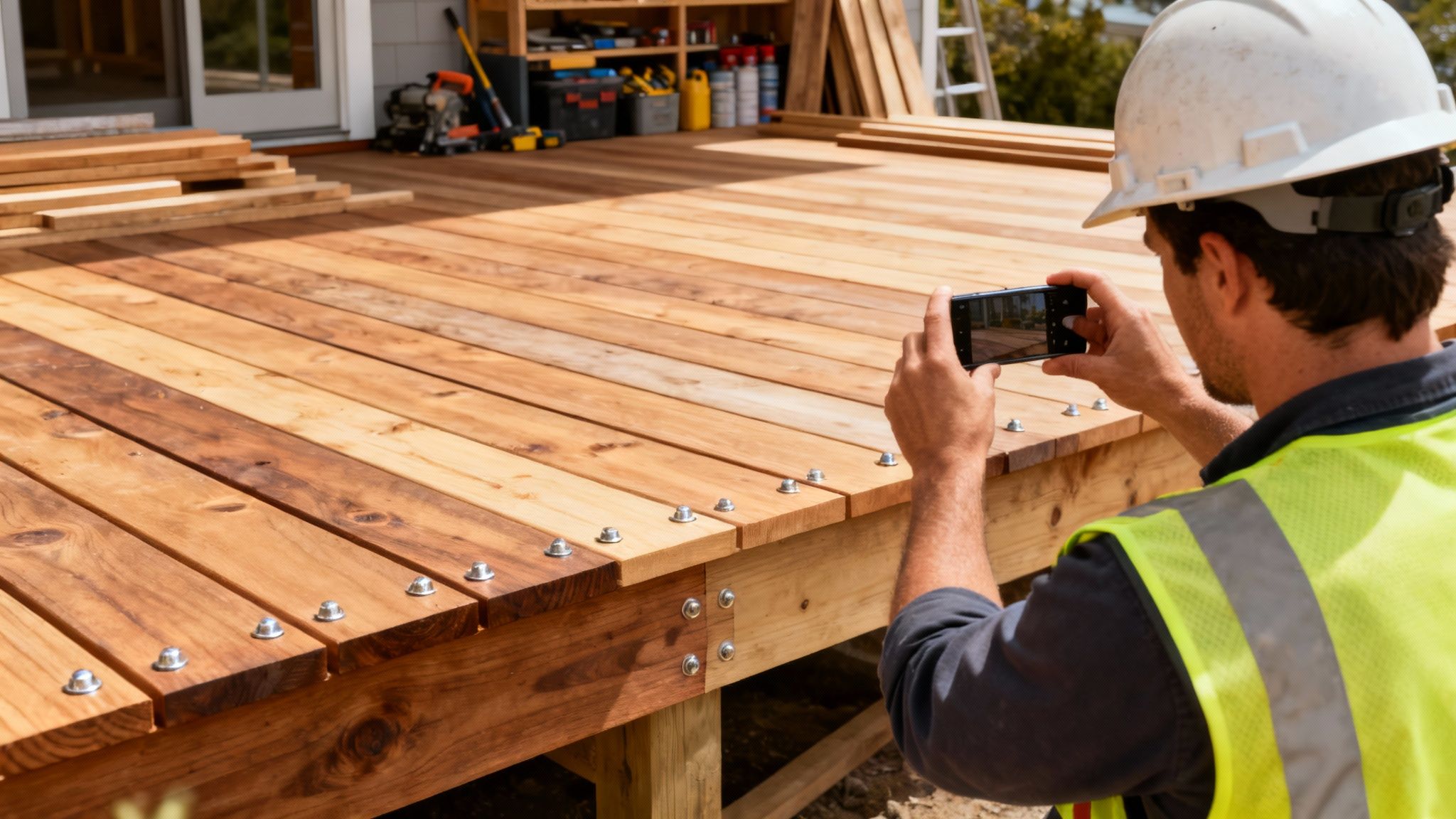
Caption: High-quality, authentic photos of materials like this lumber from a Berkeley lumberyard help customers see the craftsmanship before they buy.
The Power of Real-World Proof
When potential clients in San Francisco or Alameda see your work in a context they recognize, they can visualize a successful outcome for their own projects. It’s no longer an abstract idea; it’s an achievable result right in their neighborhood.
When customers see real projects, they aren’t just looking at the quality of the materials; they are seeing proof of your competence. Authenticity is the ultimate demonstration that you can deliver on your promises.
From Testimonials to Tangible Results
Written reviews are great, but pairing them with visuals turns a positive comment into undeniable proof. A photo of a beautifully installed door next to a homeowner’s happy quote is a powerful tool. This combination of social proof and visual evidence creates a compelling story for both contractors and homeowners.
You can see how powerful these pairings are by exploring these customer success stories and testimonials. Each story reinforces the quality and reliability that professionals and homeowners across the Bay Area have come to expect.
Why Genuine Visuals Outperform Stock Imagery
Stock photos often feel impersonal and disconnected from your brand and local community. In contrast, authentic project showcases offer unique benefits:
- Builds a Local Connection: Featuring projects in Berkeley or Oakland helps local clients feel understood. It shows you have real experience with regional architectural styles and climate.
- Demonstrates Problem-Solving: A behind-the-scenes video can show how your team tackled a challenging installation, proving your expertise.
- Highlights True Quality: Close-up shots of materials in a finished project show how they look and perform in a real environment.
Ultimately, high-quality visuals are fundamental. It’s why professional real estate photography acts as a digital handshake, immediately establishing credibility. For builders and suppliers, showcasing finished projects with professional, authentic images serves the same purpose.
Putting Visual Content to Work for Your Business
Knowing visual content builds trust is one thing; putting it into practice is another. For builders, architects, and suppliers in the Bay Area, it's time to create practical, valuable content that solves real problems. This will establish your business as the go-to local expert.
You don't need a Hollywood budget. Your greatest assets are authenticity and genuine expertise. A simple smartphone video from a job site in Oakland sharing a pro tip can be more powerful than a slick ad. The goal is to create content that educates and makes clients feel confident.
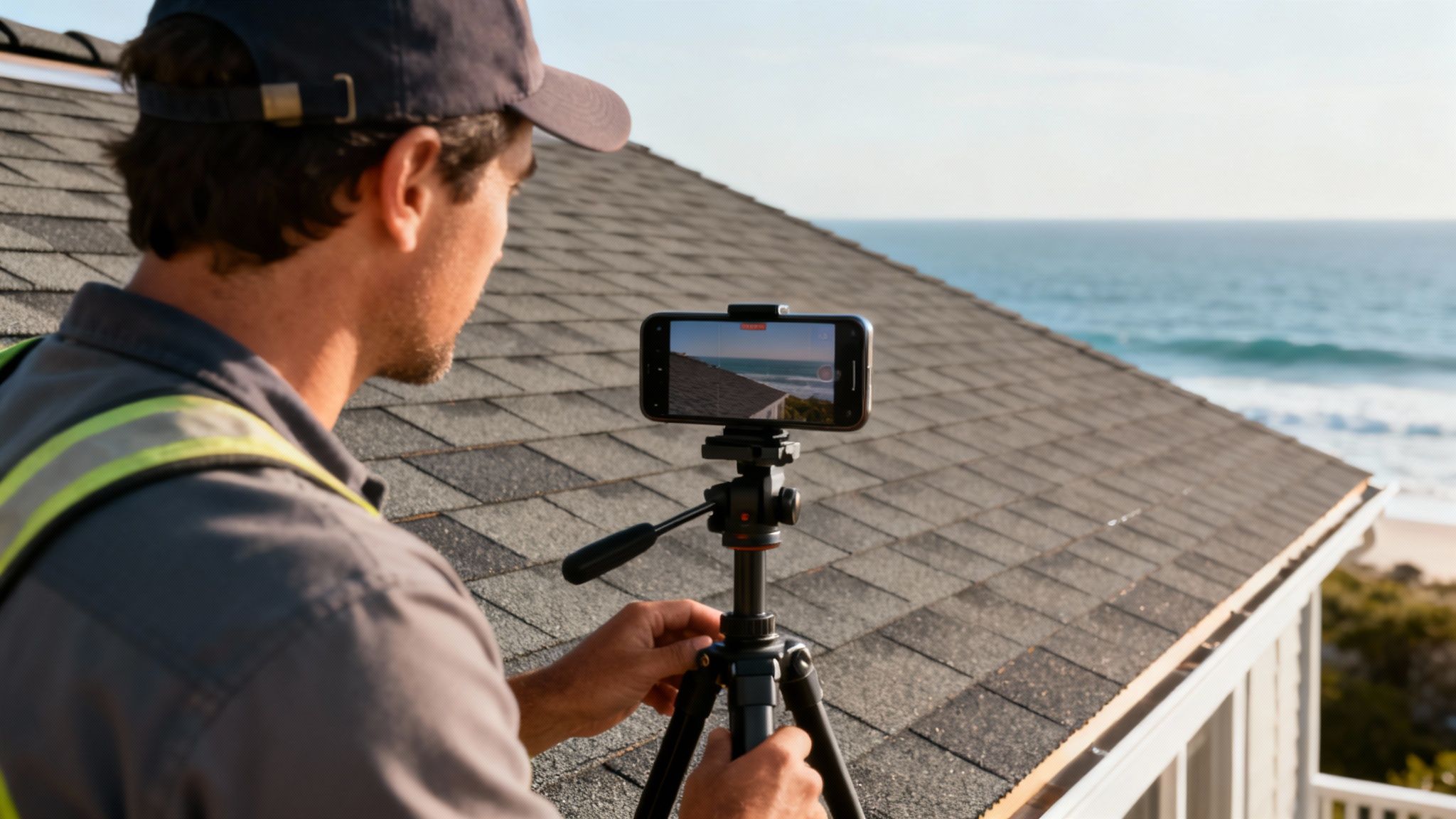
Caption: Creating helpful video content with a smartphone is an accessible way for any Bay Area building professional to connect with their audience.
Actionable Strategies That Get Results
To get started, focus on creating content that answers common questions. Think about the conversations you have with clients every day—those are a goldmine for content ideas.
Here are a few practical ideas:
- Short "Pro Tip" Videos: Film 30-60 second clips for Instagram or YouTube Shorts. A roofer could create a quick guide on choosing materials that stand up to the Bay Area's coastal fog.
- Detailed Installation Guides: Create longer, step-by-step videos for YouTube. A guide on installing a Marvin window to meet California’s Title 24 energy standards provides huge value.
- Powerful Project Portfolios: Create short video tours of completed projects with before-and-after shots. This helps clients in San Francisco or Berkeley visualize the transformation.
Creating Content That Solves Bay Area Building Problems
The most effective visual content is relevant to your local audience. Your understanding of local climate, architectural styles, and building codes is your biggest advantage.
For example, a lumber supplier could create a short video series explaining which decking materials hold up best against the region's unique microclimates. This is a valuable service that proves you understand their world.
The secret to great content is simple: be genuinely helpful. When you focus on solving your audience's problems, you naturally build the trust that leads to business.
This educational approach is a core part of any well-run project. By providing clear guidance, you are already using key project management principles. You can explore our guide on construction project management best practices for more insights.
Simple Steps to Start Your Visual Content Journey
Getting started can feel hard, but breaking it down makes it manageable. Pick one format and commit to creating it consistently.
Here’s a simple plan:
- Identify Your Top 5 Customer Questions: These are your first five content ideas.
- Choose One Platform: If your audience is on Instagram, start there. If they prefer detailed guides, make YouTube your home base.
- Film Your First Piece of Content: Use your smartphone. Focus on clear audio and good lighting.
- Publish and Engage: Post your content and pay attention to feedback. Questions and comments will give you your next ideas.
By consistently sharing your expertise through video, you meet your audience where they are already looking for answers. This strengthens your reputation as an expert resource in the Bay Area building community.
Frequently Asked Questions About Visual Content
Here are answers to common questions from builders, designers, and homeowners in the Bay Area about using visuals to build trust.
Do I need professional camera gear to create good videos?
No, a modern smartphone is all you need to start. Focus on clear audio, good lighting, and providing helpful information. Authenticity is more important than a big production budget for connecting with your audience in Berkeley or Oakland.
What kind of videos should I start with?
Start with "Pro Tip" videos that answer common customer questions. A short, 60-second clip explaining how to choose the right deck material for the Bay Area climate is simple to make and provides immediate value to homeowners and contractors.
What visuals are most helpful for homeowners choosing materials?
Before-and-after photos and project showcase videos are most effective. Homeowners in the Bay Area want to see how materials like windows, doors, or lumber look in a real local home, not just in a catalog.
How can I encourage clients to share photos of their projects?
Once a project is complete, send a friendly follow-up email asking if they would share photos. You can offer to feature their project on your social media or website (with permission) as a way to thank them. This creates authentic content and builds goodwill.
Should I post project photos on my website or on Instagram?
You should do both, but for different purposes. Use your website for a detailed, permanent project portfolio. Use Instagram for daily updates, behind-the-scenes content, and engaging with the local Bay Area community in real-time.
Builders, designers, and homeowners across the Bay Area can explore Truitt & White’s upcoming visual guides and expert insights to simplify product selection and stay ahead of building trends. Visit our Berkeley showroom for expert advice or follow our digital channels to see what’s next in smarter, more sustainable construction.


